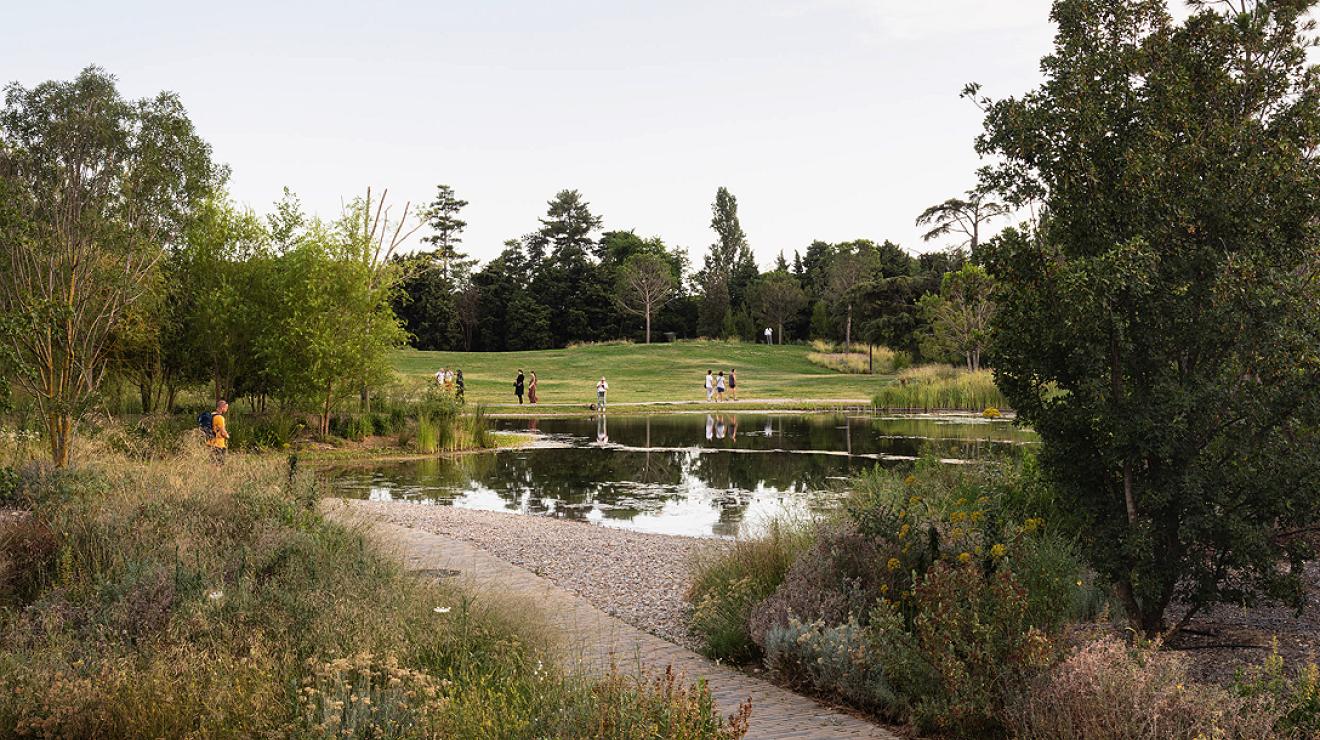In 2009, Bas Smets walked across an old industrial plaza in Arles, France. Entirely concrete, the space posed a problem. The area was being transformed into a large art complex, but in the intense summer sun, the ground reflected the heat, doubly baking pedestrians. People walking between buildings felt sun-sick, subject to a heat index around 50 degrees Celsius.
When developers asked Smets to reimagine the site, he posed a simple question: what would nature do? Smets, now a professor in practice of landscape architecture, says that as the climate changes, cities, as designed, are becoming unlivable. Over-paved, cities flood in the rain and fry in the heat. To prepare cities for future generations, he turns to nature.
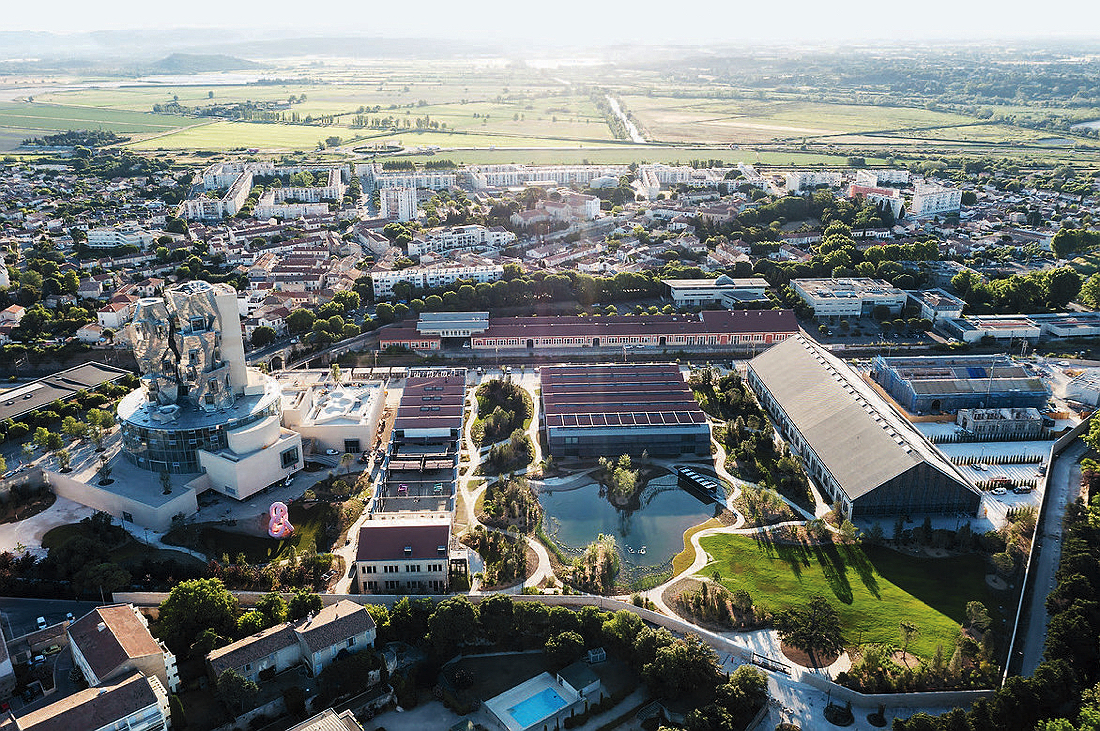
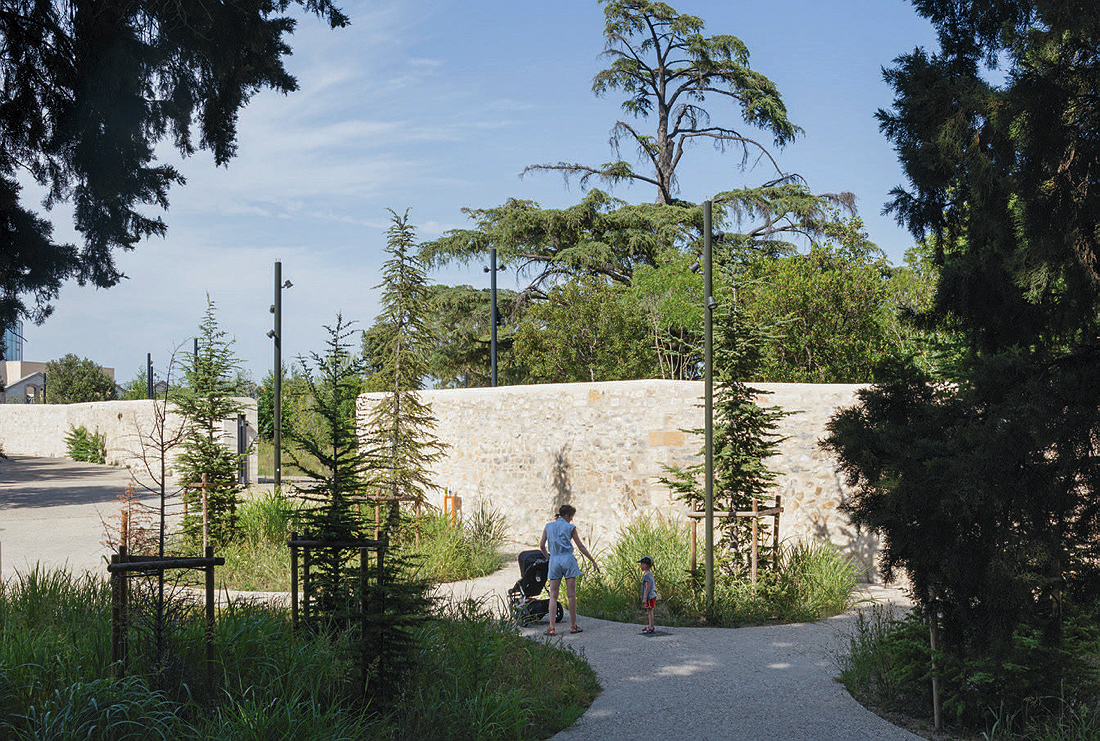
In Arles, Smets’s firm collected atmospheric data from the 10-acre site, quantifying the temperature, humidity, and wind. With that evidence, he imagined a breeze swirling over the neighboring buildings. The sediment blown in would gradually build a topography: dunes and valleys. In those newly distinct areas, individual environments would form, and different types of plants would thrive. Fifteen years, 80,000 plants, and one lake later, the resulting park feels 20 degrees Celsius cooler in the summer. That, says Smets, is “the climate machine in action.”
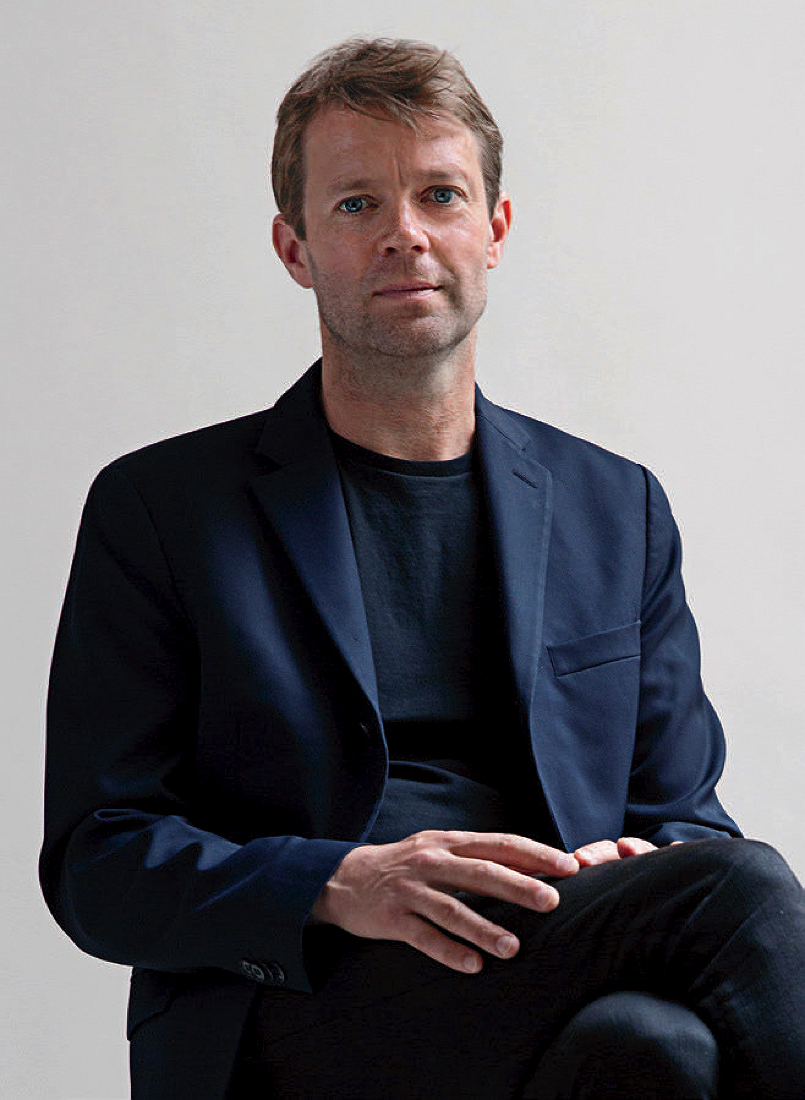
Landscape architects have always thought about the climate. They place trees to provide shade and water features to help cool. But few designers are as “on fire about climate” as Smets, says the Graduate School of Design’s chair of landscape architecture Gary Hilderbrand. Every aspect of Smets’s designs is climate-oriented. He thinks in terms of “microclimates,” hyperspecific spaces linked to natural features. Larger projects consist of a series of microclimates. In his mind, buildings become canyon walls, streets become valleys, and stairs become avalanches. Identifying a parallel natural climate helps Smets determine how to incorporate vegetation and tweak humidity. Marrying data, nature, and art, he builds spaces (parks, courtyards, beaches, plazas, roads, and memorials) that are prepared for the climate of today—and of tomorrow.
As a child, Smets grew curious about the environment around him, both built and natural. He saw his father’s civil engineering projects, for which the family moved all around Belgium and to the Congo before eventually settling in Tervuren, a town on the southeast edge of Brussels. Though he describes Belgium as a “land without a landscape” given its flatness, he got to experience Earth’s range during a pre-college year abroad in Portland, Oregon, where he hiked Mount Hood and swam in the Snake River.
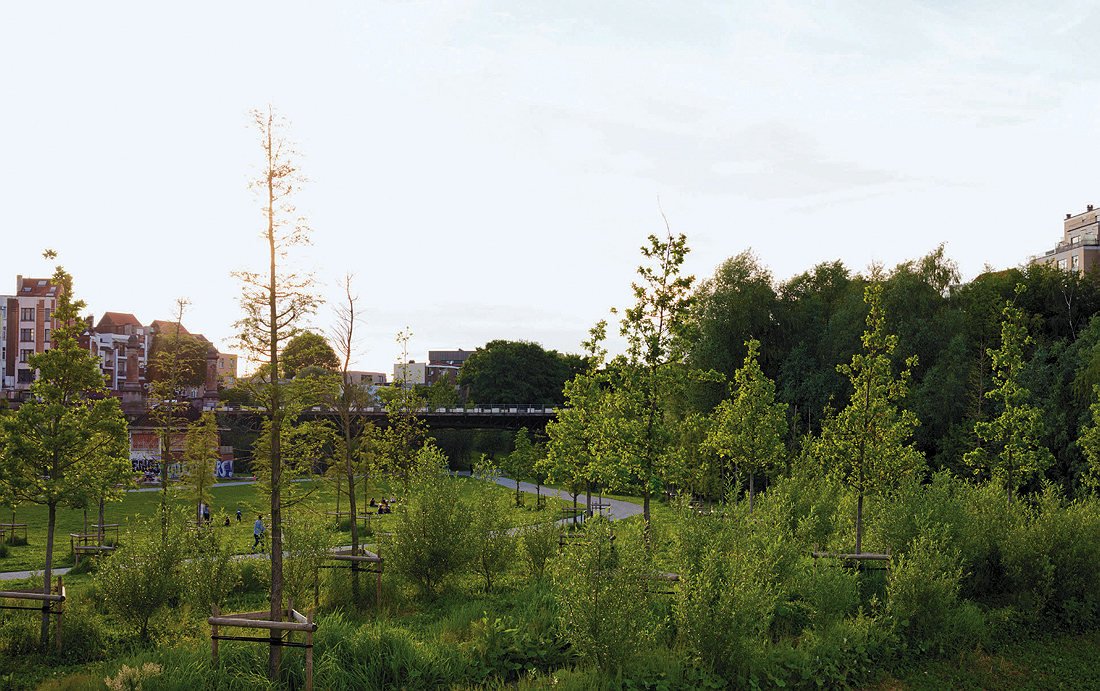
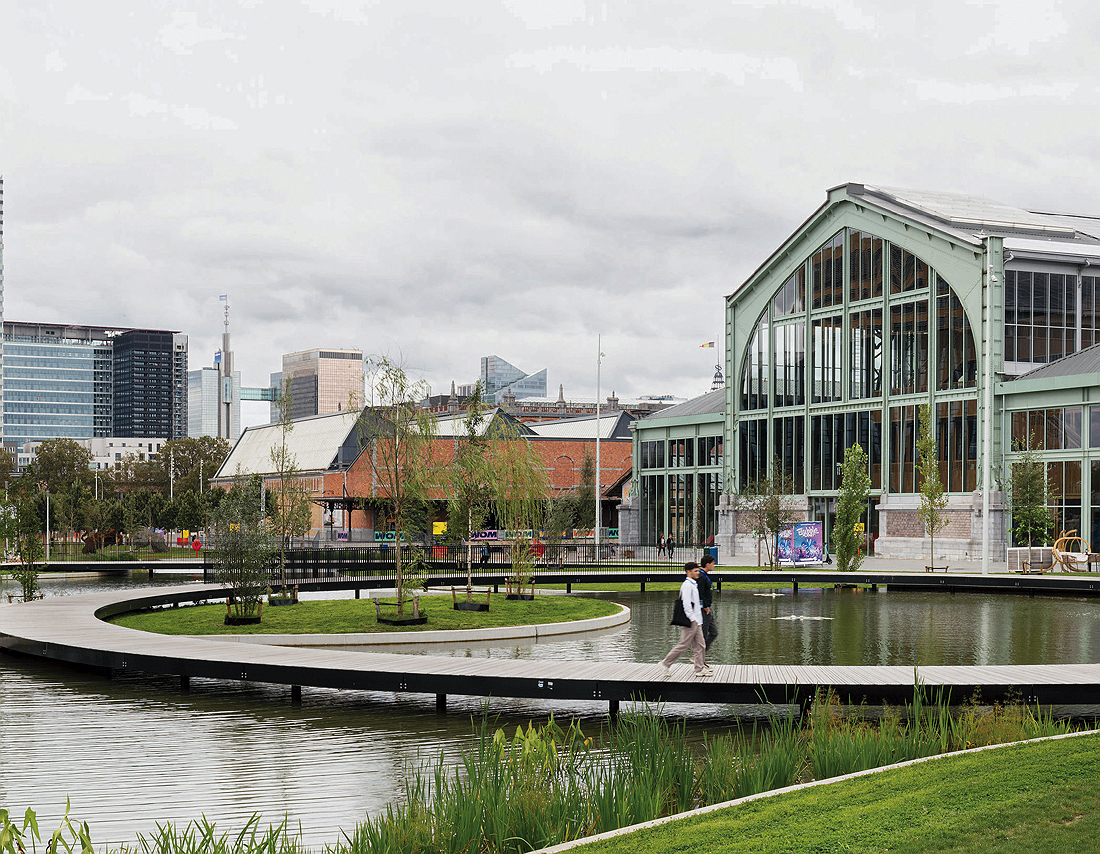
Smets initially thought he would study philosophy. But the big questions he kept pondering—how humans should live, and how they should share space with other organisms—felt physical. An aspiring urbanist, he enrolled at KU Leuven, just east of Brussels, studying both civil engineering and architecture. When his professors assigned design projects, Smets focused on the outdoor areas, treating the buildings almost as an afterthought.
Once he graduated with a master’s in architecture and civil engineering in 1999, he began Ph.D. studies in urbanism at KU Leuven. But after a year, he realized that he lacked the necessary experience to shape the outdoors and began an internship with landscape architect Michel Desvigne in Paris, a six-month assignment that lasted six years. In 2001, he started studying for a master’s in landscape architecture at the University of Geneva. Monday through Thursday, he’d plan parks for Desvigne in Paris before hopping on a train to Geneva for weekend instruction, rushing through his schoolwork on a plastic tray table. His two mentors—a philosopher and an architect—melded perspectives on art and life and encouraged Smets to do the same. He emerged from Geneva in 2003 triply trained as an engineer, architect, and landscape architect, ready to help cities adapt to climate change practically and affordably.
In 2008, after six years of working for Desvigne, he launched Bureau Bas Smets from his Brussels kitchen. Sixteen years later, his firm maintains that familial feeling: the 30 employees cook lunch and dinner together in the shared kitchen, his father is the firm’s CFO, his wife (also an architect) provides artistic consultation, and his four-year-old daughter tags along on foreign site visits. Smets’s employees represent his background: a mix of architects, landscape architects, and engineers. Their practice spans private and public, gardens and plazas, roadways and beaches—all with a climatic tie.
Smets is drawn to the field because “there’s still so many things to be invented.”
When Smets talks about his work, he uses scientific terms. His projects are “experiments.” His office is his “laboratory.” He’s drawn to the field because “there’s still so many things to be invented.” Unlike technology and manufacturing, he says, landscape architecture has not yet been optimized. His voice quickens when he talks about creating buried reservoirs, hidden drainage, and interconnected tree planters.
Those innovations come from necessity. His clients are mostly cities and towns whose budgets are tight. So he tries to reuse material from existing sites and avoids buying expensive greenery. He tinkers to find solutions for problems cities will have when they are warmer and more likely to experience floods and droughts.
For too long, Smets says, landscape architecture has been an afterthought: the designers were tasked with “filling in the green triangle that was left over in the plan.” That green triangle might be an obligatory public-benefit park developed alongside a commercial project or some empty space in the town center. When Smets works on a project, he insists on a holistic approach. For example, while working on Tour and Taxis, a post-industrial redevelopment project in Brussels (pictured above), he buried the stone ballast of the former railroad tracks under a large grassy area, creating a million-liter water reservoir.
It stored so much rainwater that, in addition to irrigating the park, it could store water for the project’s newly constructed buildings. By using the park’s reservoir, the developers avoided building costly underground water cisterns. “The park design,” Smets says, “thus became an integral part of the development of the site.”
Smets doesn’t just draw up his plans: he executes them, too. He visits his in-progress sites frequently, and the engineer in him obsesses over construction details. At Tour and Taxis, he had a very specific vision for the shape of the park’s valley. The bulldozer operator did not think it was possible to use his machine to make the valley shape that Smets imagined, and taught Smets how to drive it so that he could understand its capabilities. Together, they molded the proper shape, gently leading down to the flat central lawn.
With their intricate studies and data-driven designs, Smets’s projects articulate an unspoken argument: public space is important. Each tree, bench, and trash can should be intentionally designed for the site’s environmental and climate context. Shared spaces should not just be written off as parking lots or markets. Instead, he says, well-designed parks and squares can help “anchor the urban sprawl” and make people excited to use urban facilities.
Climate change is complex, occurring in the aggregate and over time. But the effects are felt most acutely in specific events like hurricanes, tornadoes, floods, droughts, and extreme temperatures. Smets is fascinated by breaking climate down into its parts, analyzing very specific patches of land to detail the climate at that site.
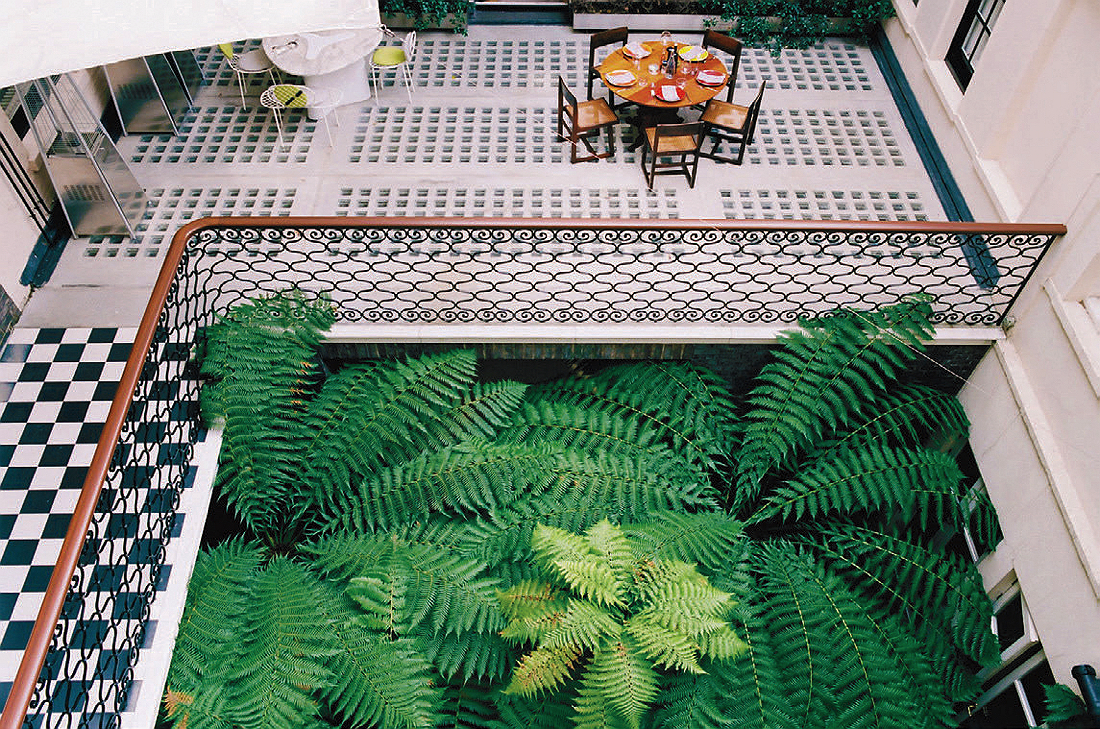
He completed his first project incorporating microclimate analysis in 2011. A client asked him to create a lush garden for a London home, where three surrounding tall buildings shaded the courtyard. Curious about how their walls would change the environment, Smets asked the construction company to take the temperature in the courtyard and on the street. The courtyard, shielded from wind, was three to four degrees Celsius warmer. Smets realized that the space did not feel like London: it was more like a tropical forest. He imported tree ferns from New Zealand, planted palms, and installed an automated misting system to maintain the tropical humidity—an early experiment that shaped his subsequent practice of designing for the environment specific to a site.
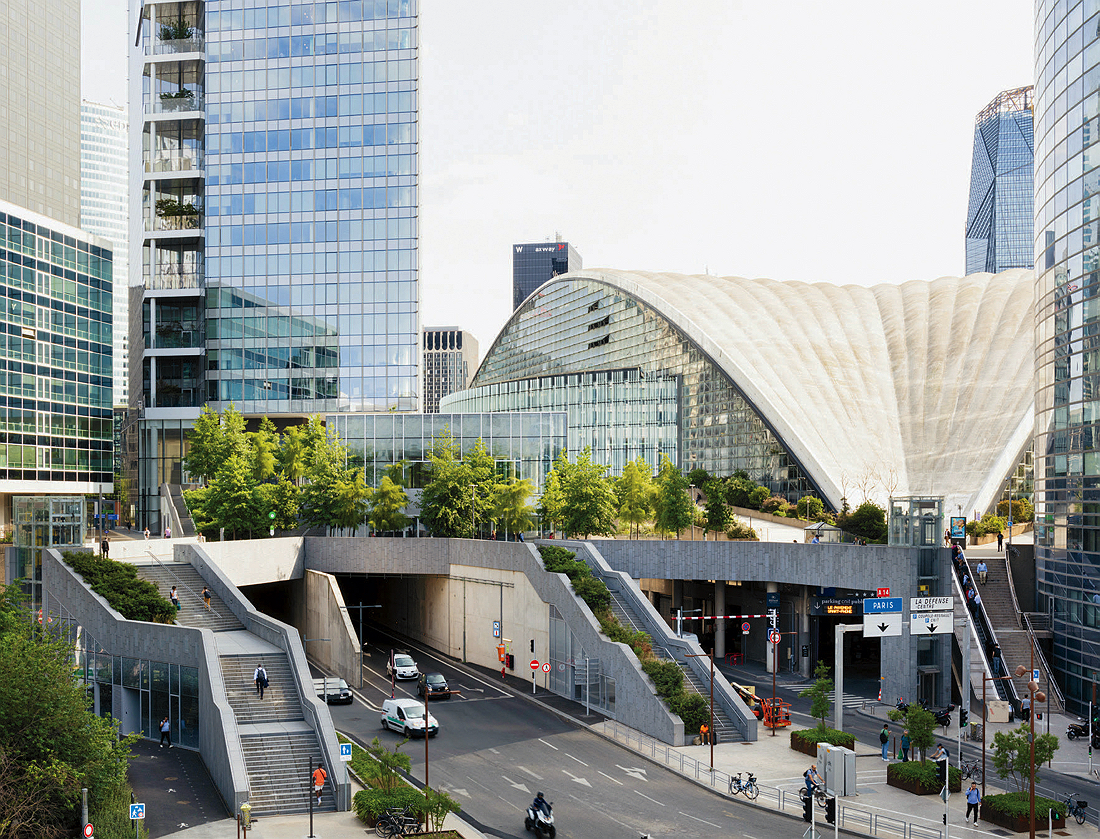

Next, he wanted to create a microclimate from scratch, not just respond to an existing one. That opportunity arose in 2011 when the team behind the La Défense skyscraper just outside Paris asked him to bridge the busy boulevard abutting the building (pictured above). Smets conceived a mountain landscape with the nearby skyscrapers’ facades as glaciers, a raised plaza with greenery and rocks as the tree line, and two jagged staircases as avalanches. He plotted all the non-planted zones on the raised platform (wheelchair paths, fire access, beams) and then, for the rest, crafted a continuous soil bed for 50 trees. Completed in 2020, the canopy will take a few years to mature, but will soon provide refuge from hot Parisian summers.
The 12-year project in Arles, completed in 2021, represents the pinnacle of Smets’s microclimatic approach so far. On a barren space he designed a series of distinct environments referring to different climates in southern France, each with its own topography, shrubbery, and trees. As a result, nature has returned. “When you bring plants,” he said in a 2021 lecture, “animal life comes back, birds come back….You can bring life back to a site.”
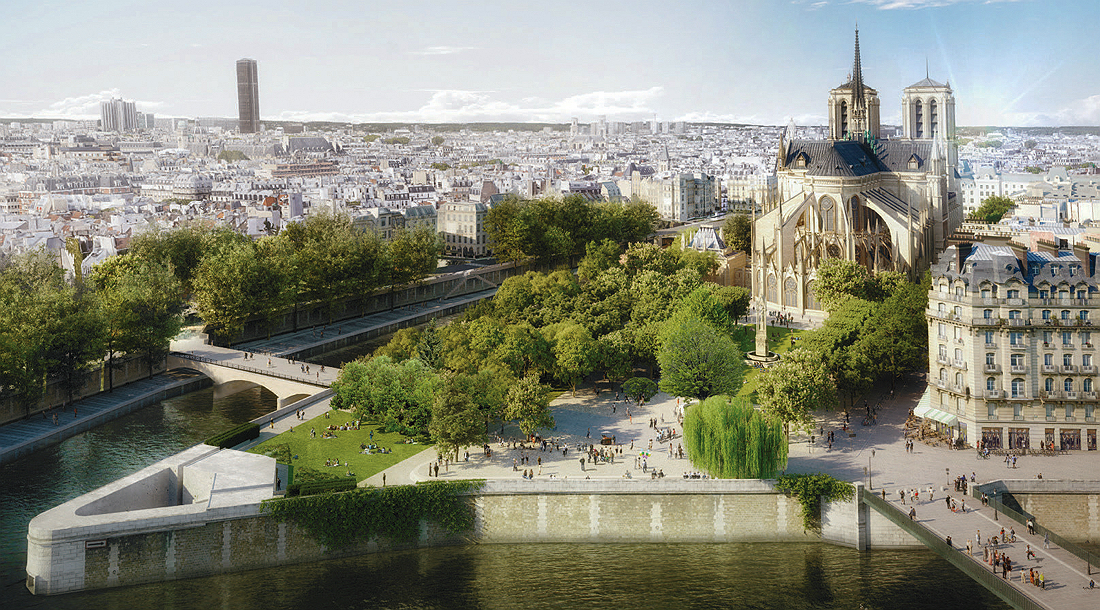
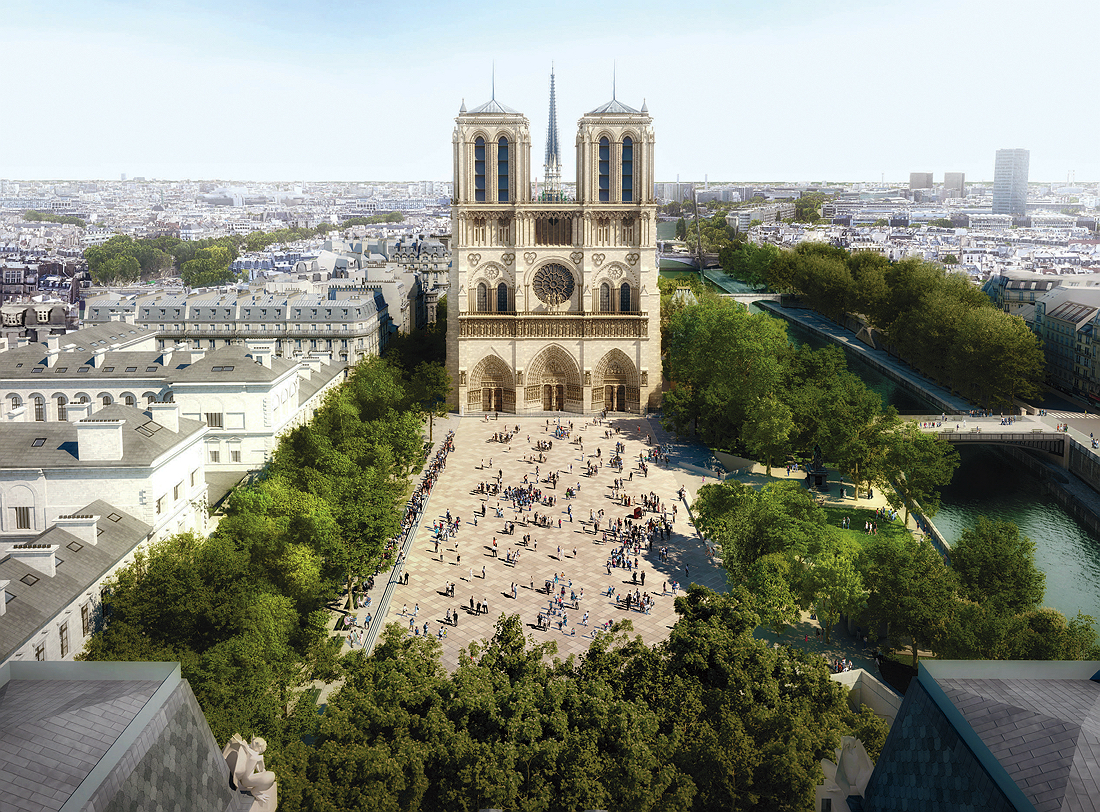
This message resonates with the public. In 2022, Bureau Bas Smets won the competition to redesign the Notre-Dame de Paris grounds in the wake of the 2019 fire that devastated the cathedral, his firm’s highest-profile project. Many groups submitted designs lush with greenery, but Smets believes he won because his firm was “the only team to accurately address microclimates.” Paris is building a series of “cool zones,” outdoor spaces where residents can escape the rising heat. His interest in reducing perceived temperatures in specific, well-designed ways aligns with Paris’s climate objectives. For Smets, relinking the Seine with the city through a series of microclimates could help spread his climatic model.
For at least the next four autumns, Smets will come to Harvard monthly to teach a Graduate School of Design studio course, “Biospheric Urbanism.” Much as he loves his firm’s projects, “We always respond to a brief made by the client.” Teaching allows him to study any scenario, not just those he is commissioned for.
In the course, which he taught twice in 2023, a dozen students collaborate with a city that wants to prepare for a warmer world with more volatile weather. (New York and Paris were the first two, with Athens scheduled for this fall.) First, he says, the group creates a “new cartography” for the city, identifying its many microclimates. Next, each student identifies a “peculiar” microclimate and drafts an intervention that is repeatable, pragmatic, and visionary. Then Smets divides the class into four groups. He asks one how the city could adapt to a global temperature rise of two degrees Celsius. The others he asks, what about three degrees? Four? Five? The proposed interventions grow increasingly intense. For a two-degree rise, people could stay cool if there were more street trees. At five degrees, students explore what socialization underground and at night could look like.
By repeating the class six times, Smets hopes to popularize microclimatic landscape design, shaped by natural interventions. He knows that he cannot adapt to climate change alone. But perhaps nature can help.
